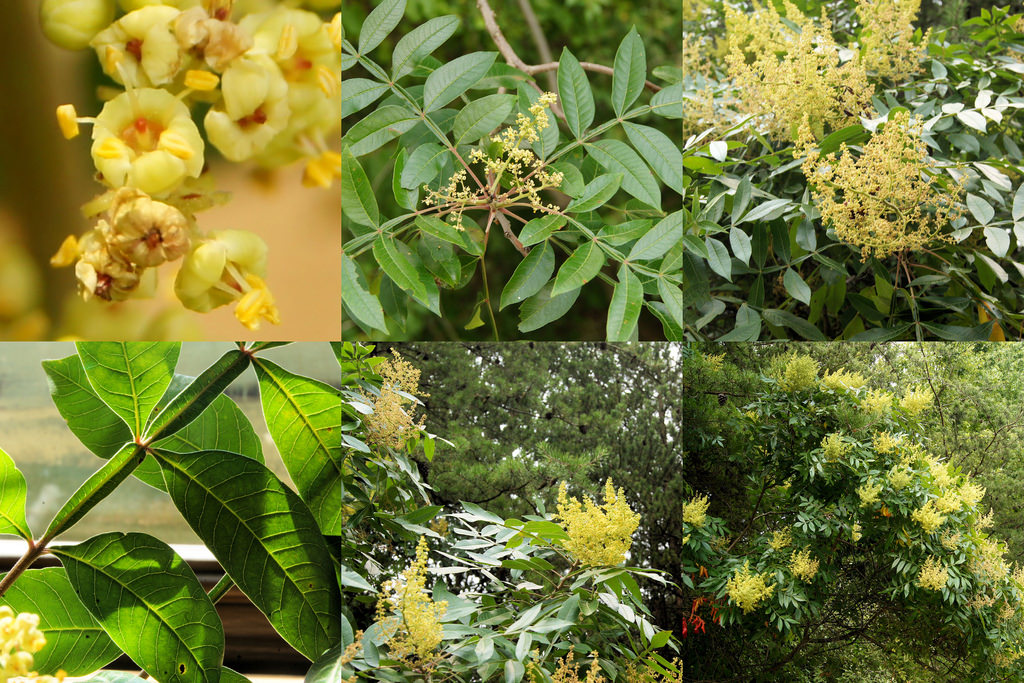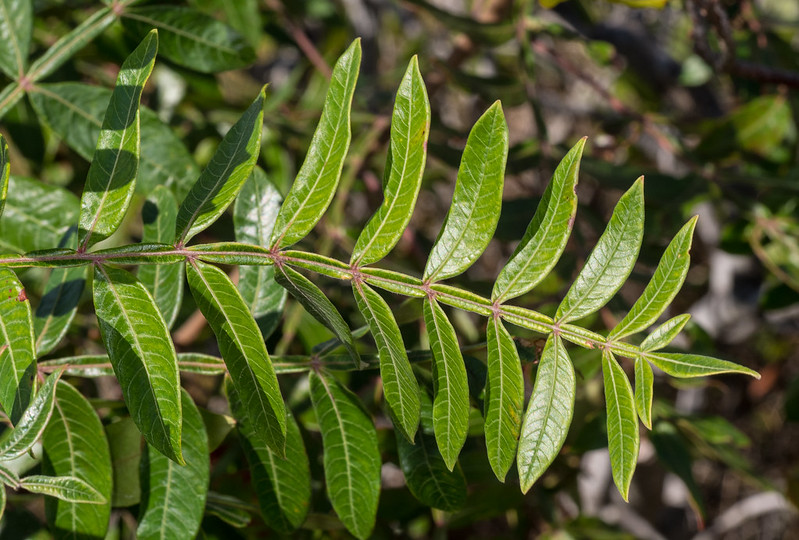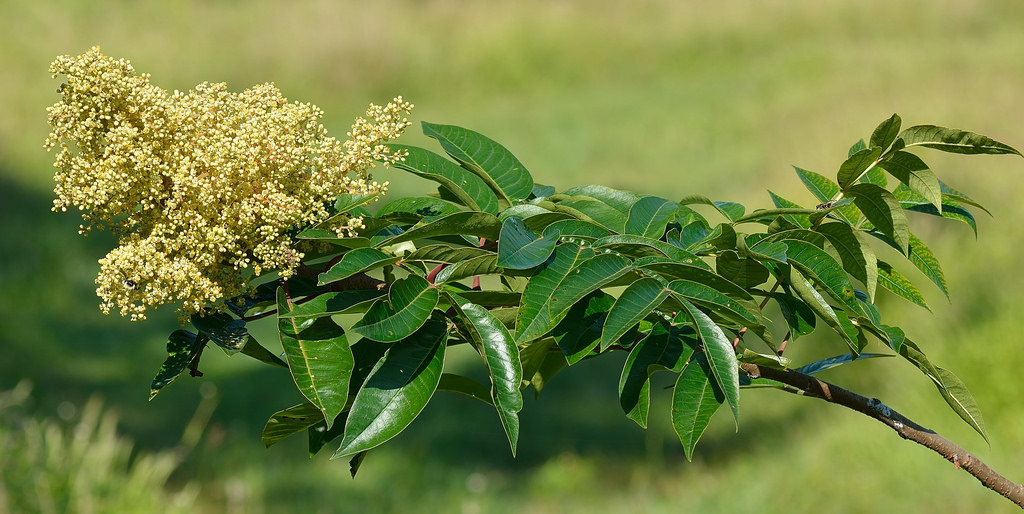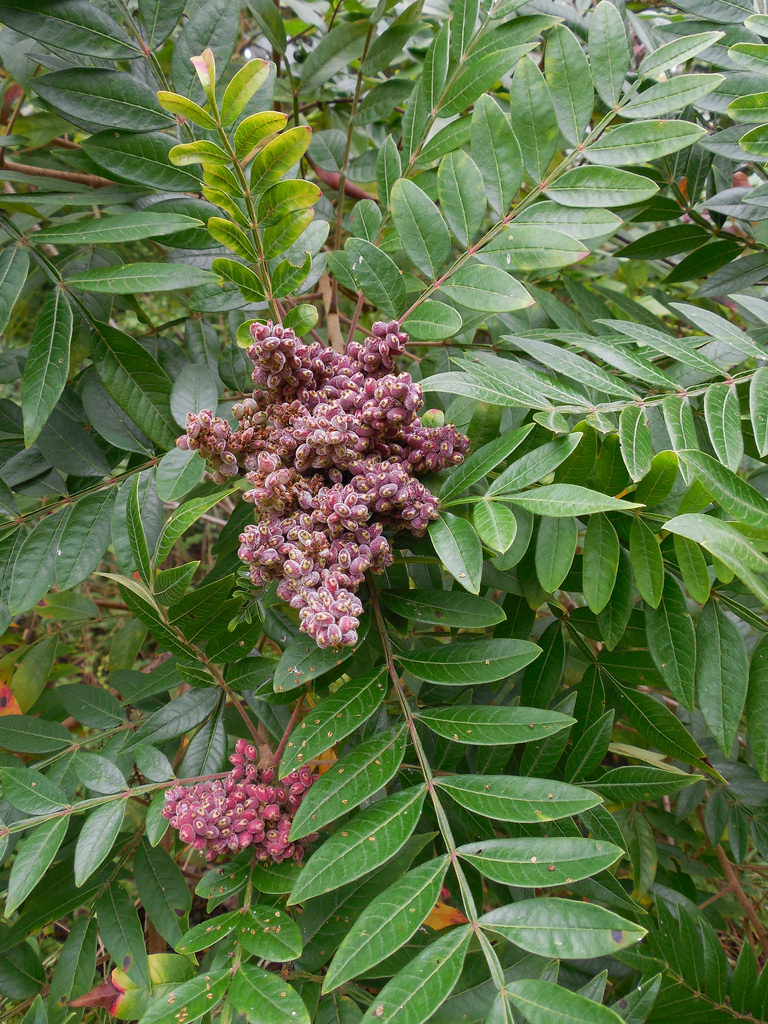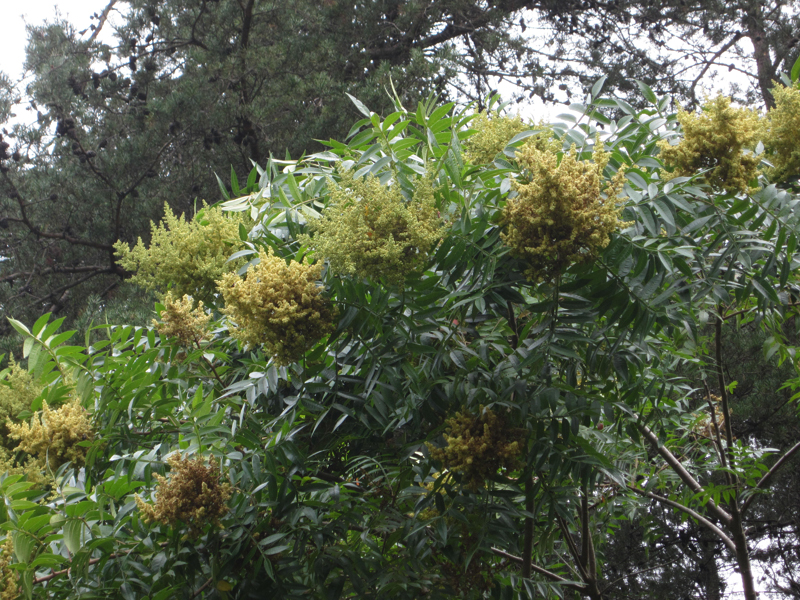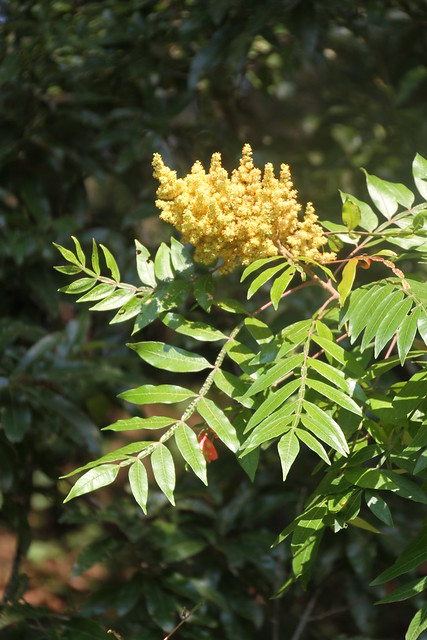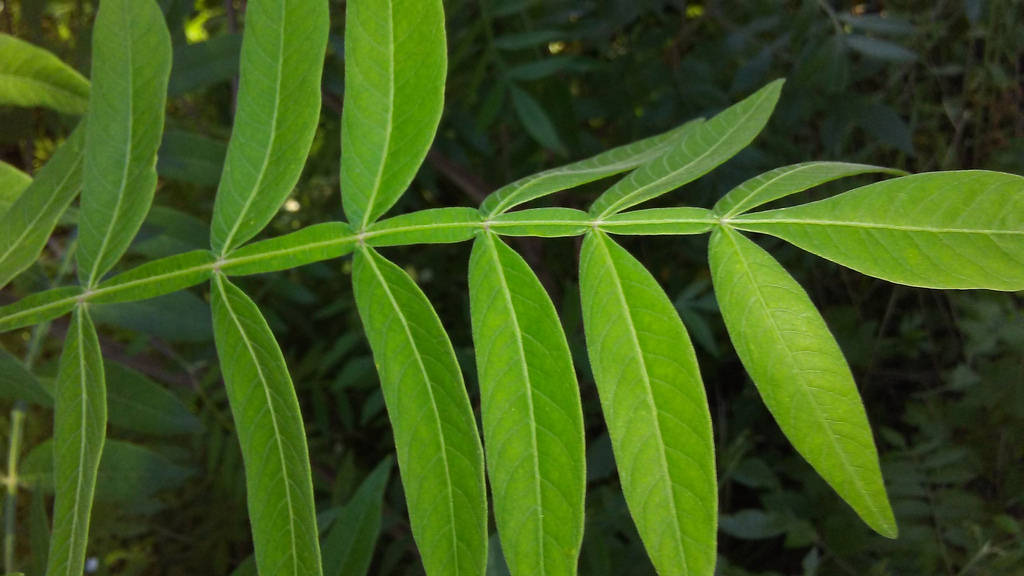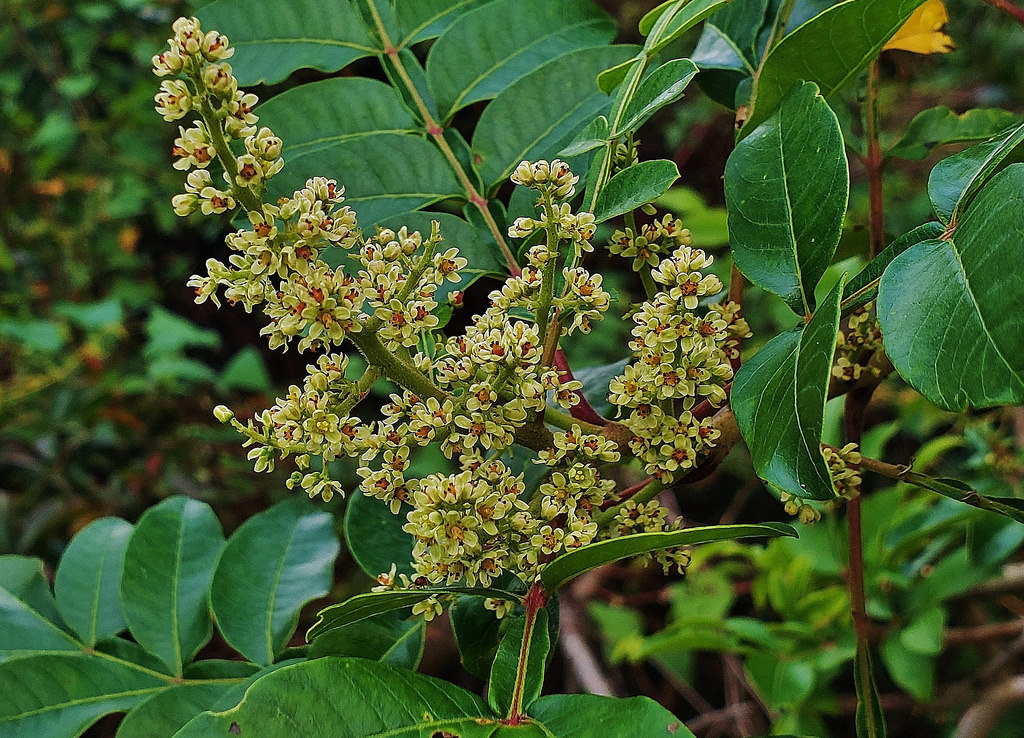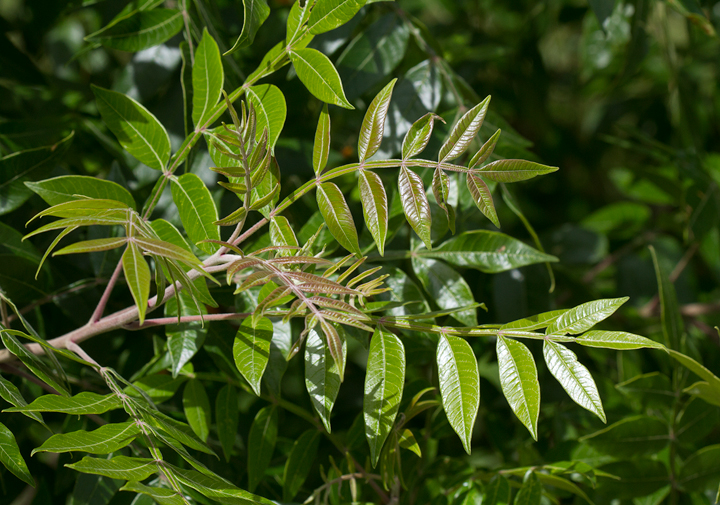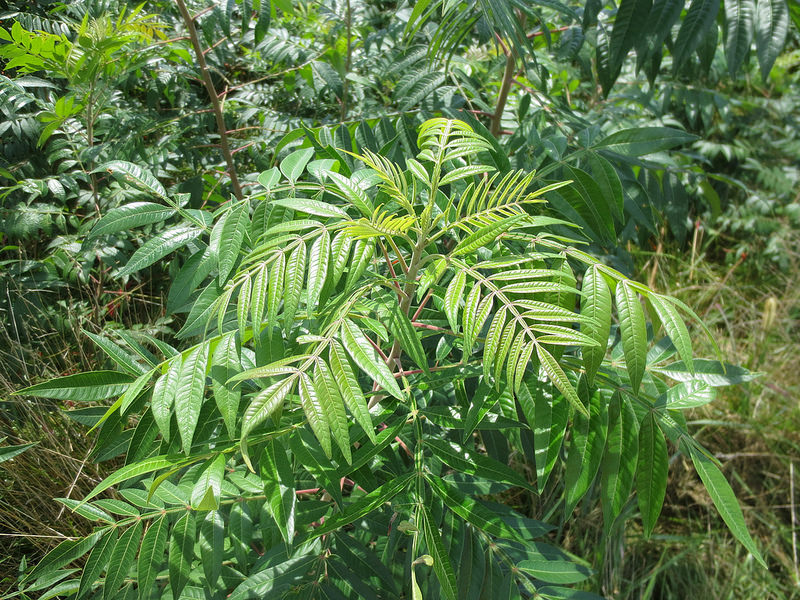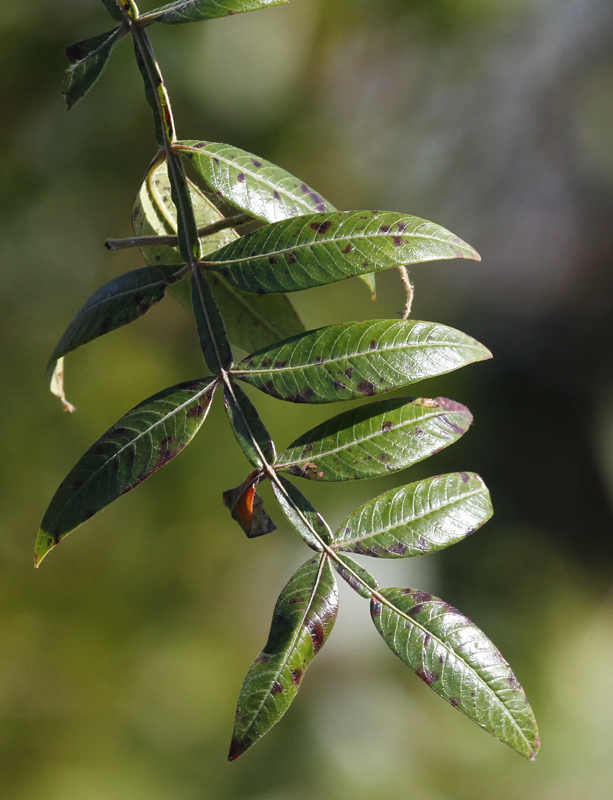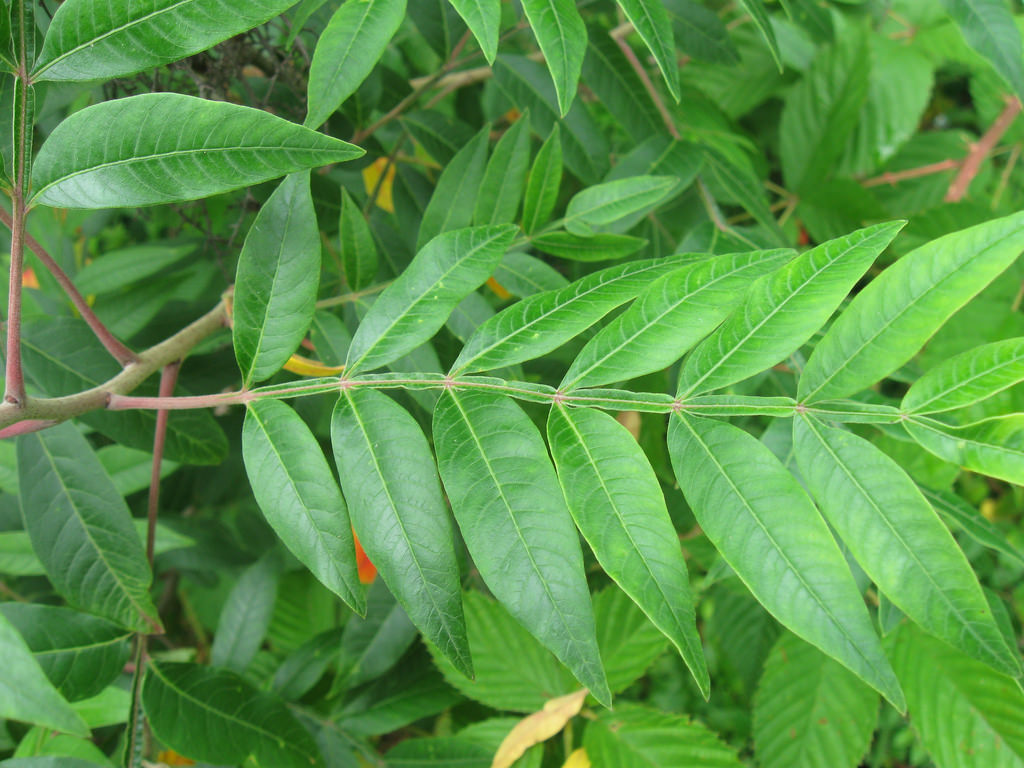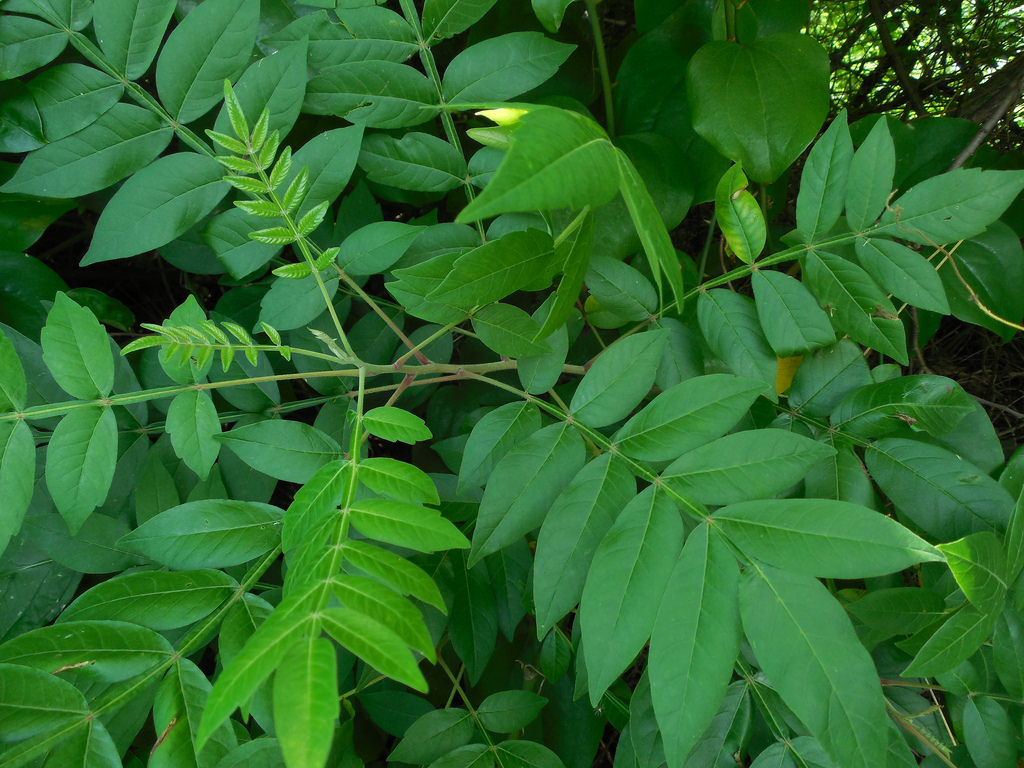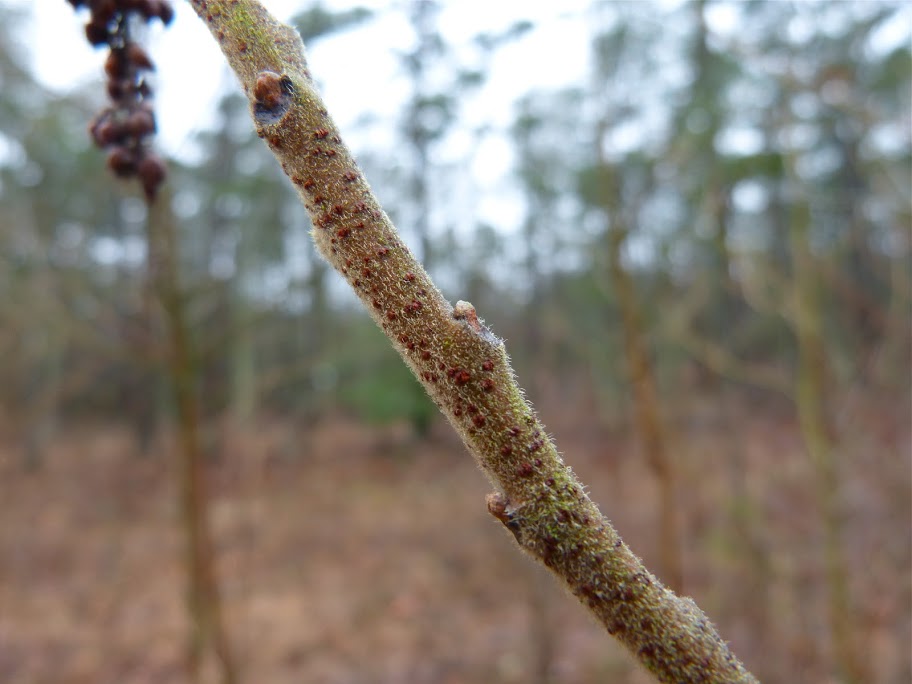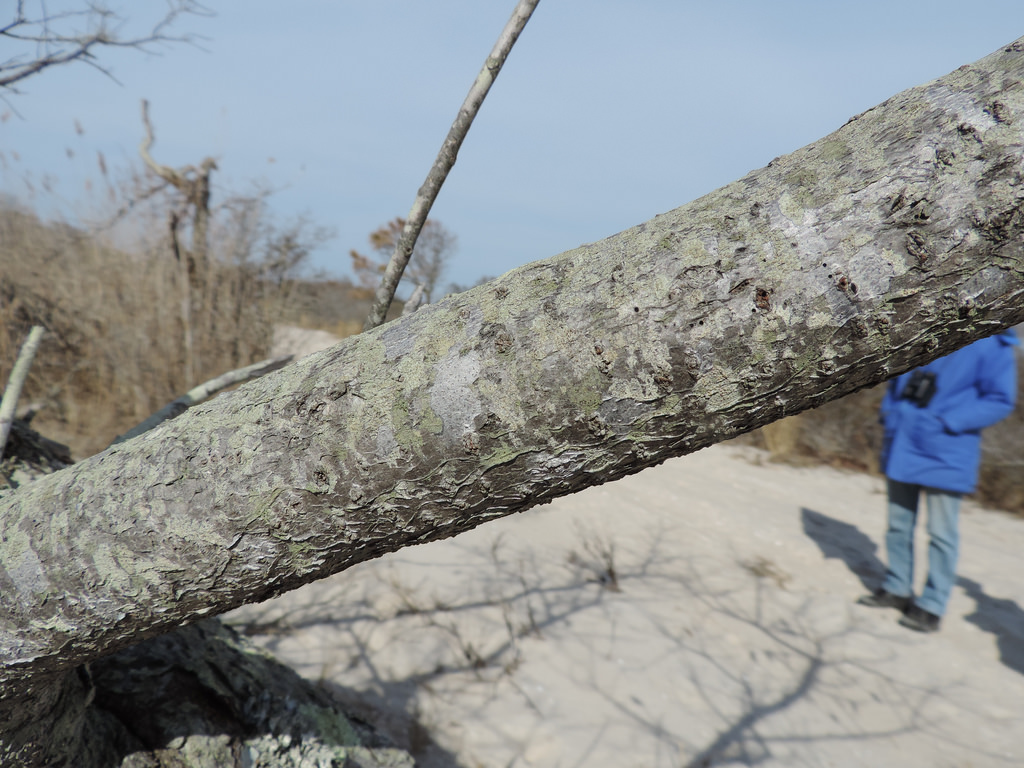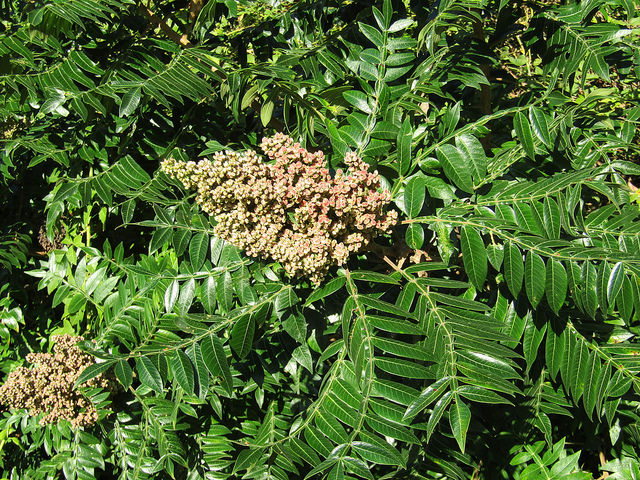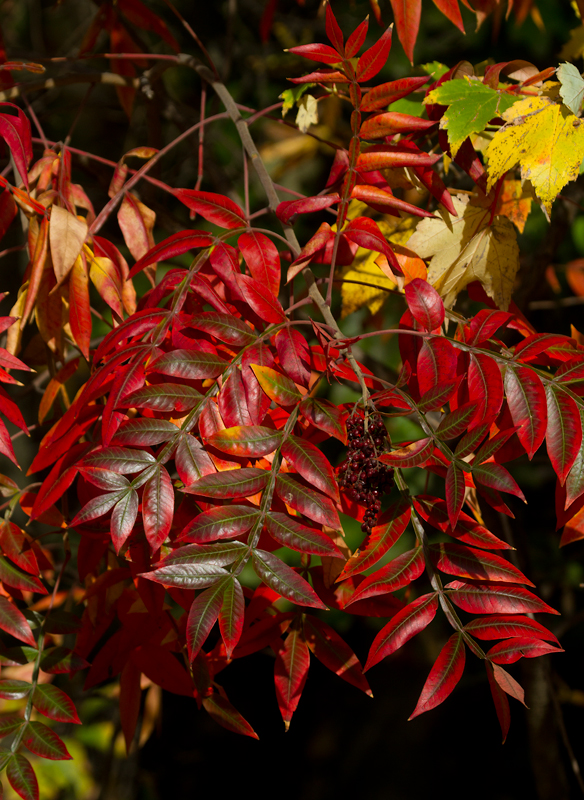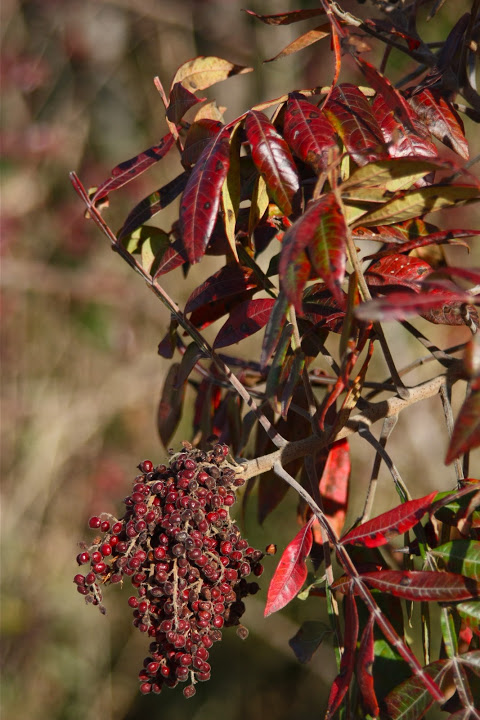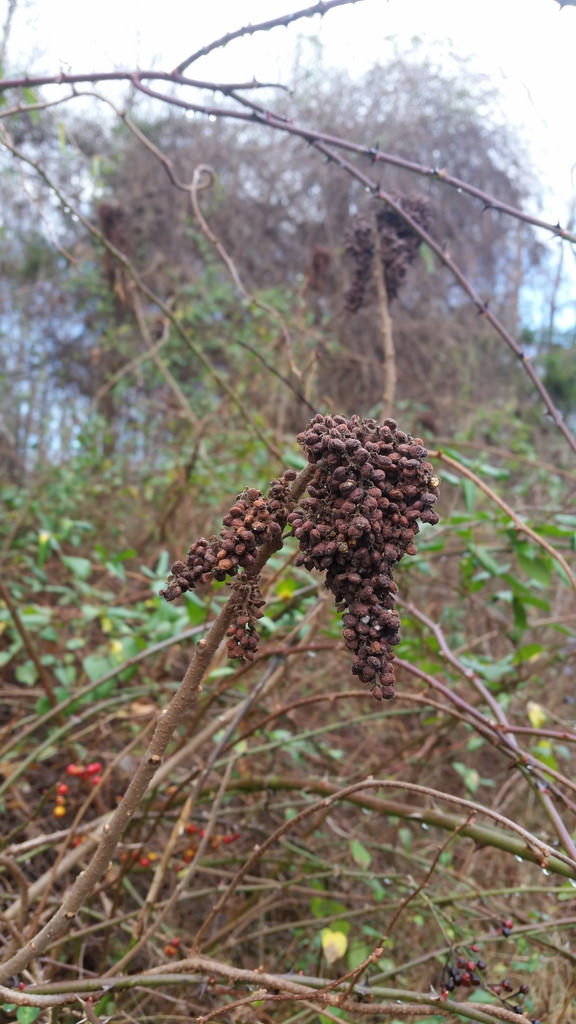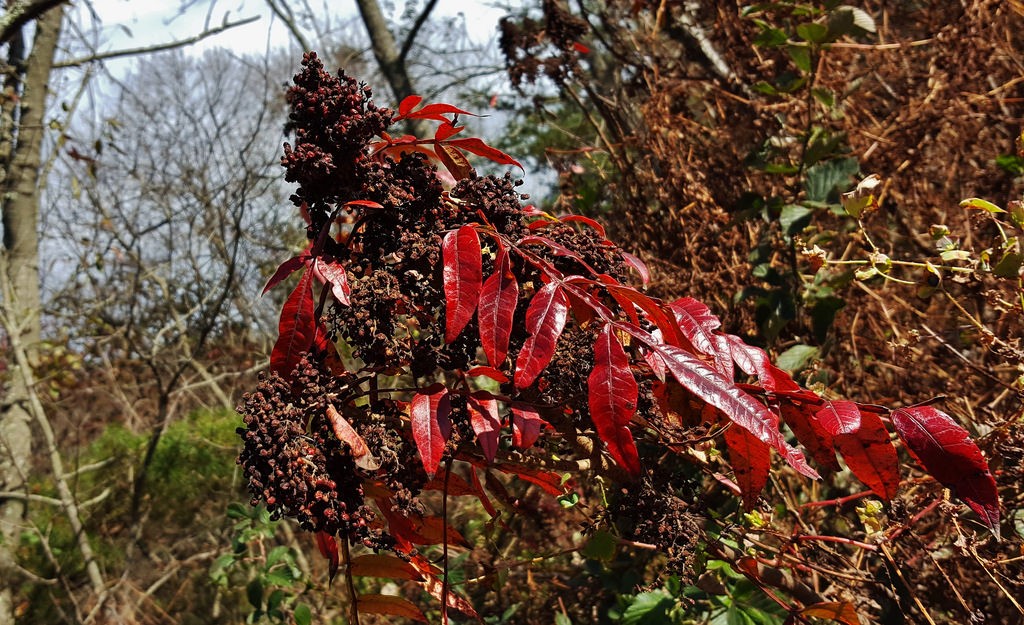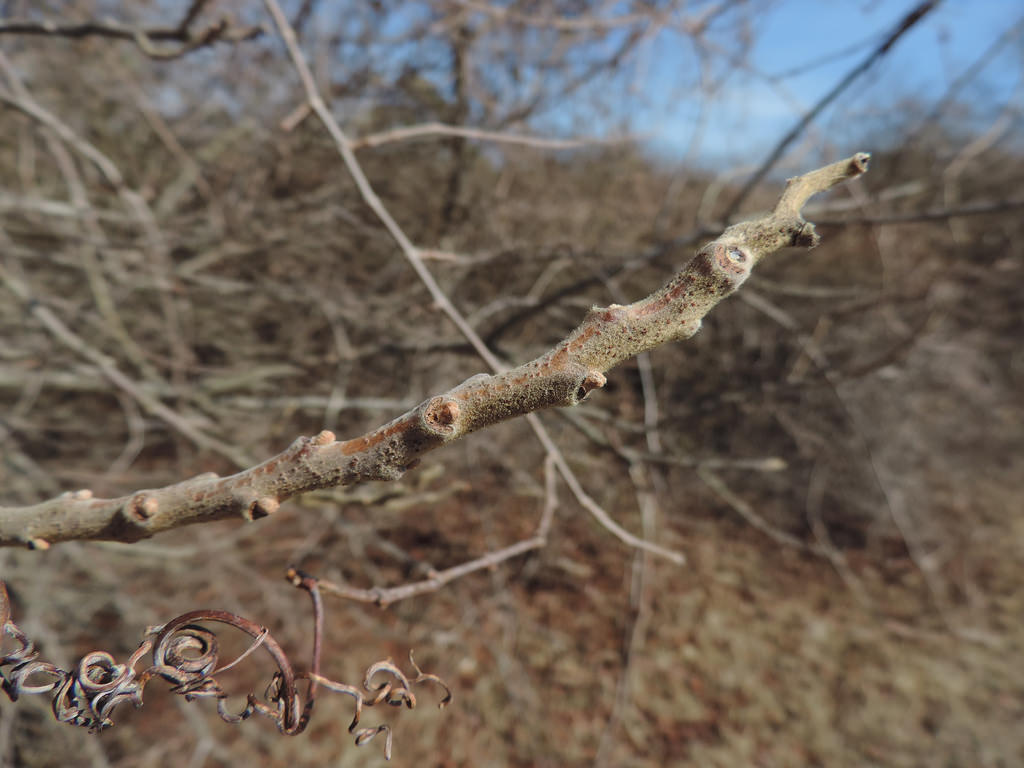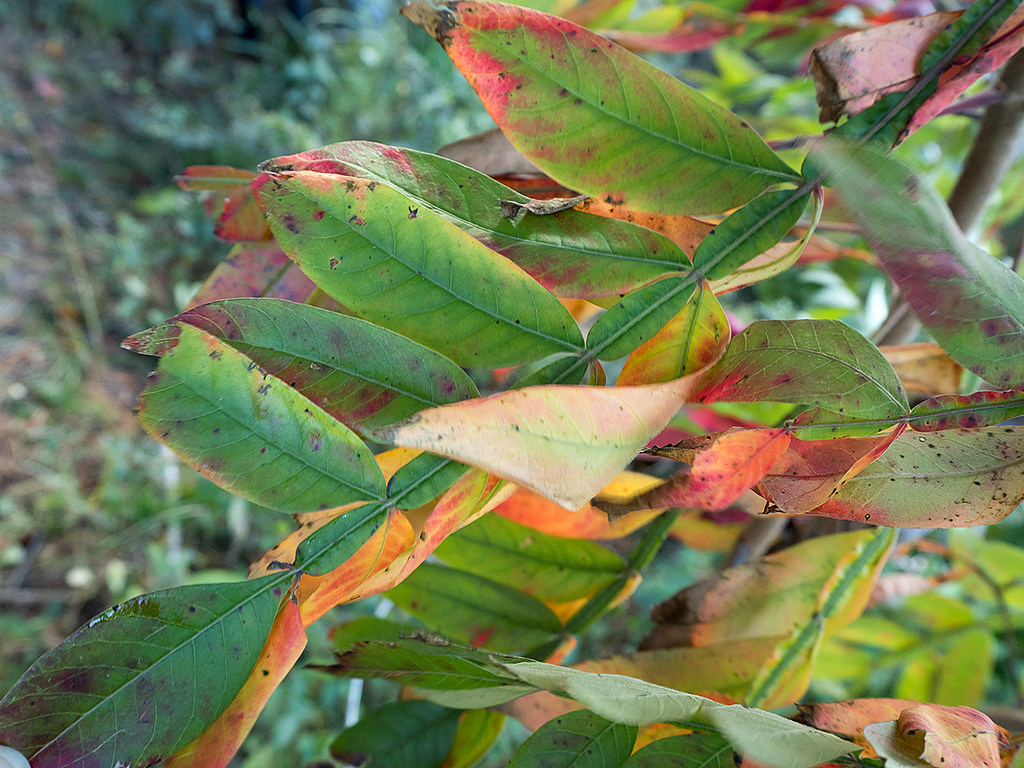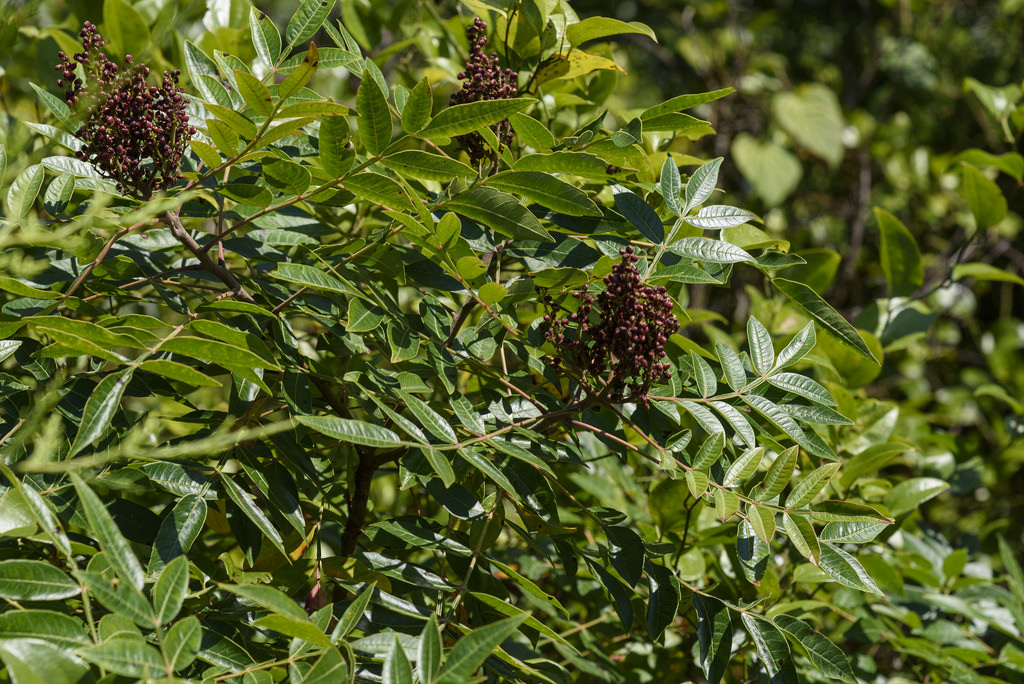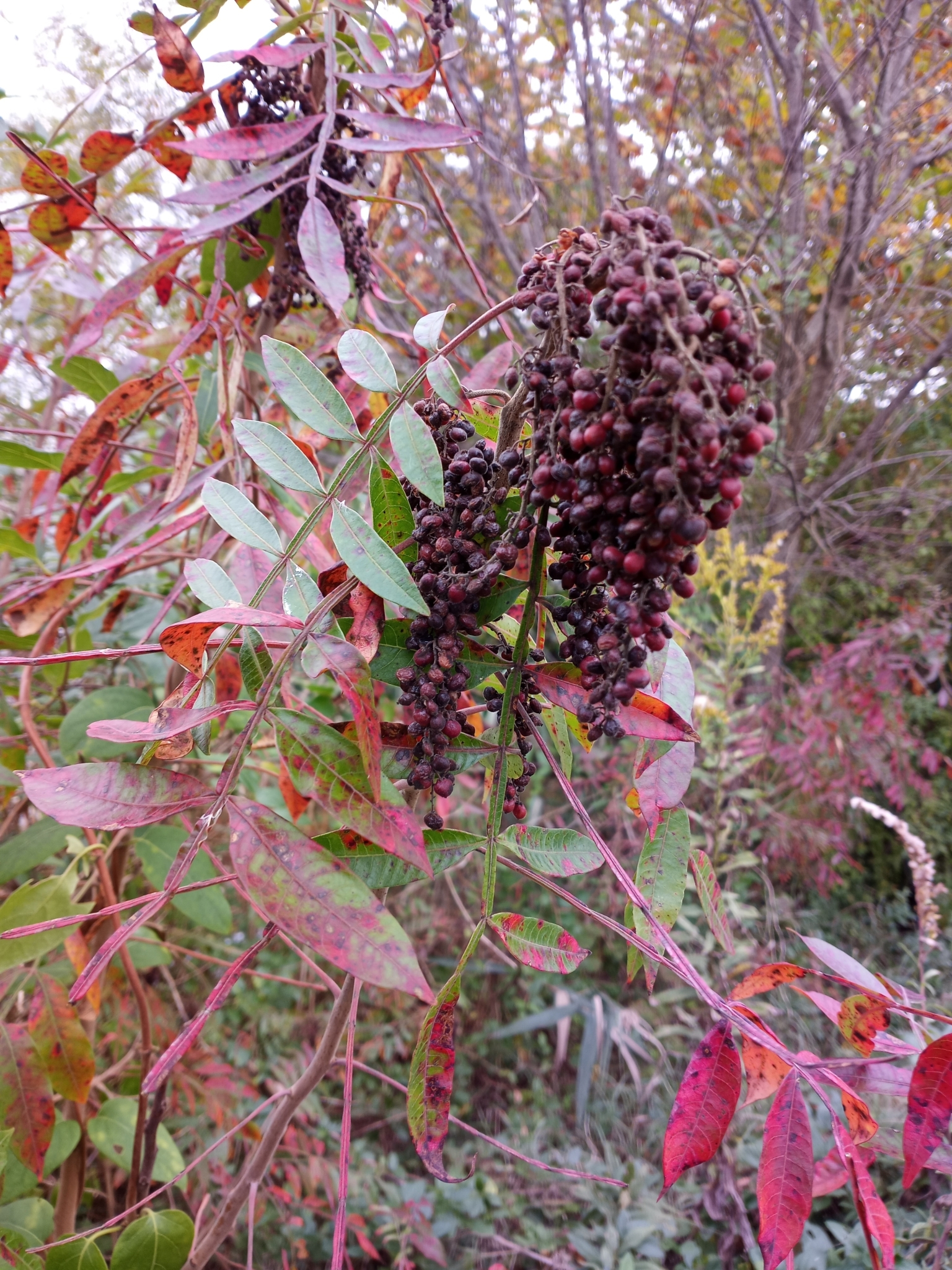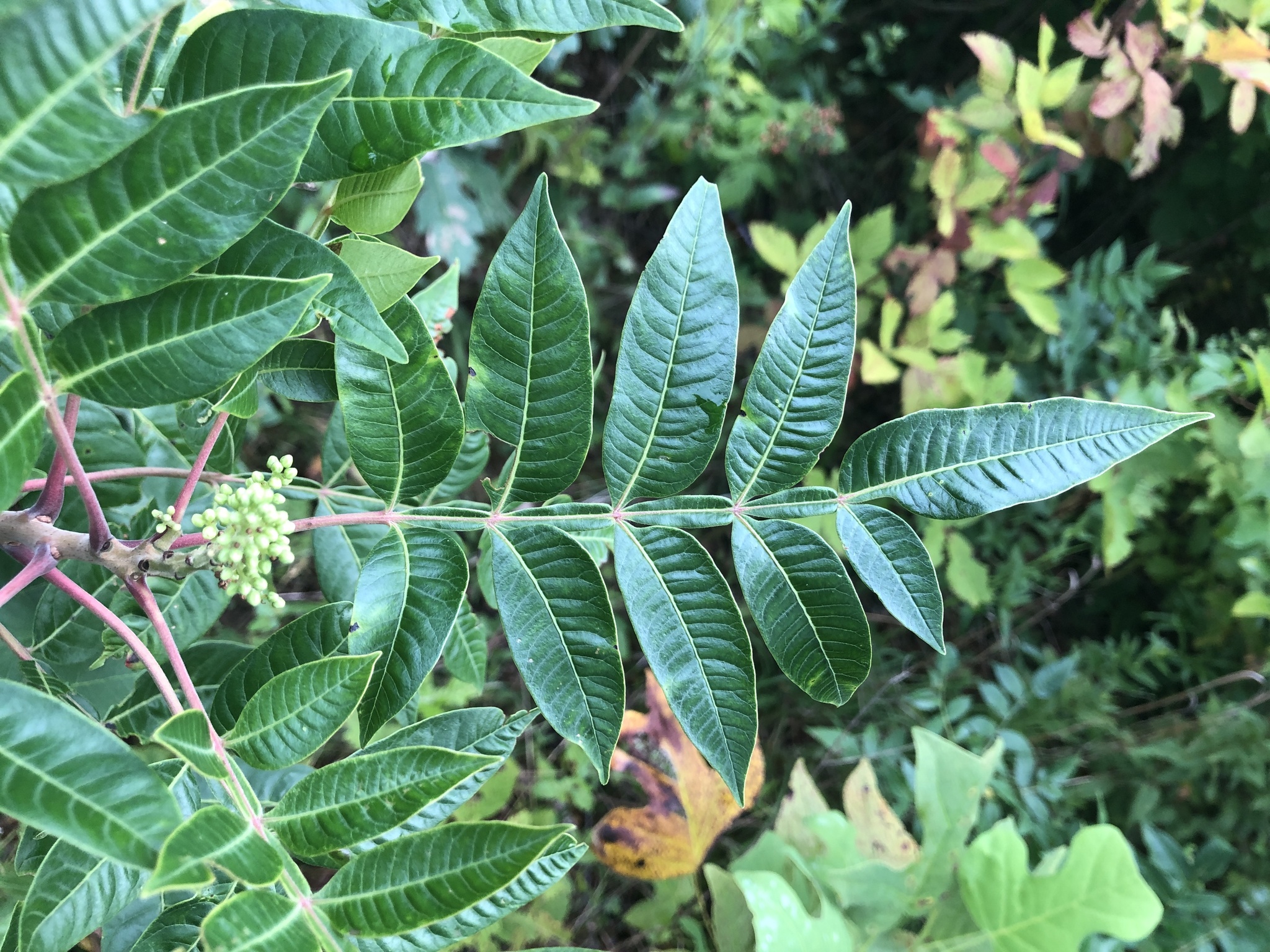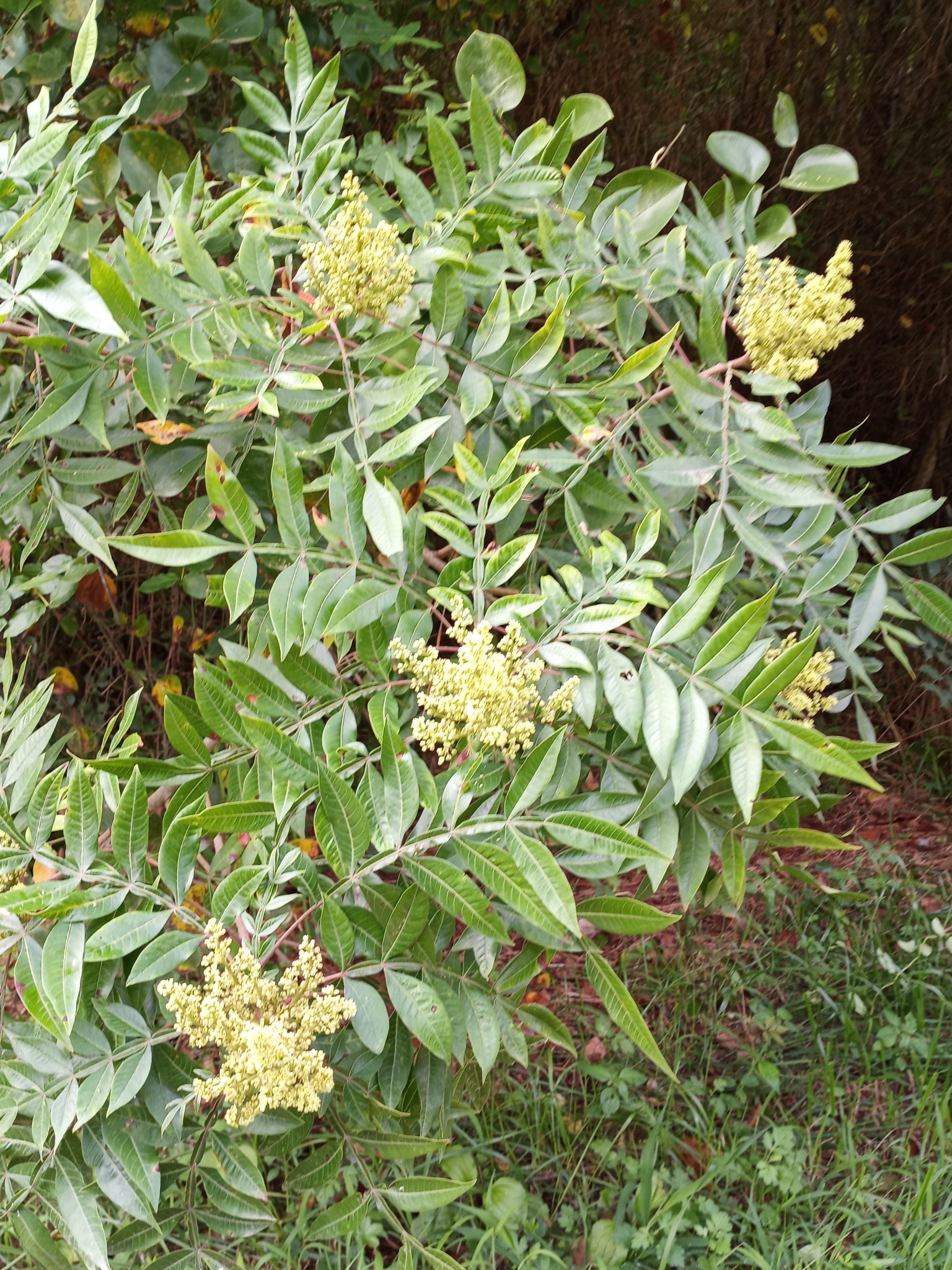

 Synonyms: Dwarf Sumac, Flameleaf Sumac, Rhus copallinum var. latifolia, Rhus copallinum var. leucantha, Shining Sumac.
Synonyms: Dwarf Sumac, Flameleaf Sumac, Rhus copallinum var. latifolia, Rhus copallinum var. leucantha, Shining Sumac.























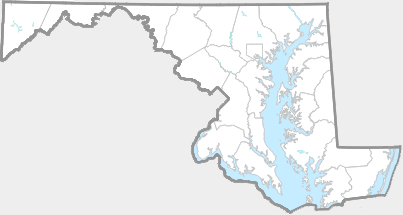
A shrub or small tree that is very common on the Coastal Plain.
Opposite, pinnately compound leaves; rachises have wings 1-5 mm wide between the leaflets, making for easy identification. In winter, note drooping fruit clusters.
Hedgerows and wooded edges in open sun. Common in maritime dune forests, such as at Assateague Island National Seashore. Also occurs in old fields and successional forests.
This species and other members of the sumac genus (Rhus) are host plants for the Sumac Flea Beetle. Other beetle species that use Winged Sumac as a host plant include the leaf-rolling weevil Synolabus nigripes (BugGuide).
Winged Sumac is the host plant for the psyllid Calophya nigripennis.
Winged Sumac has been recorded as a host plant for the Red-banded Hairstreak (Databse of World's Lepidopteran Host Plants).
Host plant for various moth species including the Regal Moth, Luna Moth, Variable Antepione Moth, Angle-winged Emerald Moth, Showy Emerald Moth, Red-fronted Emerald Moth, Sumac Leafblotch Miner Moth, Striped Sumac Leafroller Moth, Variegated Cutworm Moth, Yellow-haired Dagger Moth, Smeared Dagger Moth and Spotted Datana Moth (BugGuide & Database of World's Lepidopteran Host
Plants).The moth species Stigmella intermedia causes distinctive leaf mines on the leaves of Winged Sumac.
Winged Sumac is also a winter food source for a variety of bird species.
There are 753 records in the project database.
| GA | AL | WA | FR | CL | MO | HO | BA | BC | HA | CE | PG | AA | CV | CH | SM | KE | QA | CN | TA | DO | WI | SO | WO |
